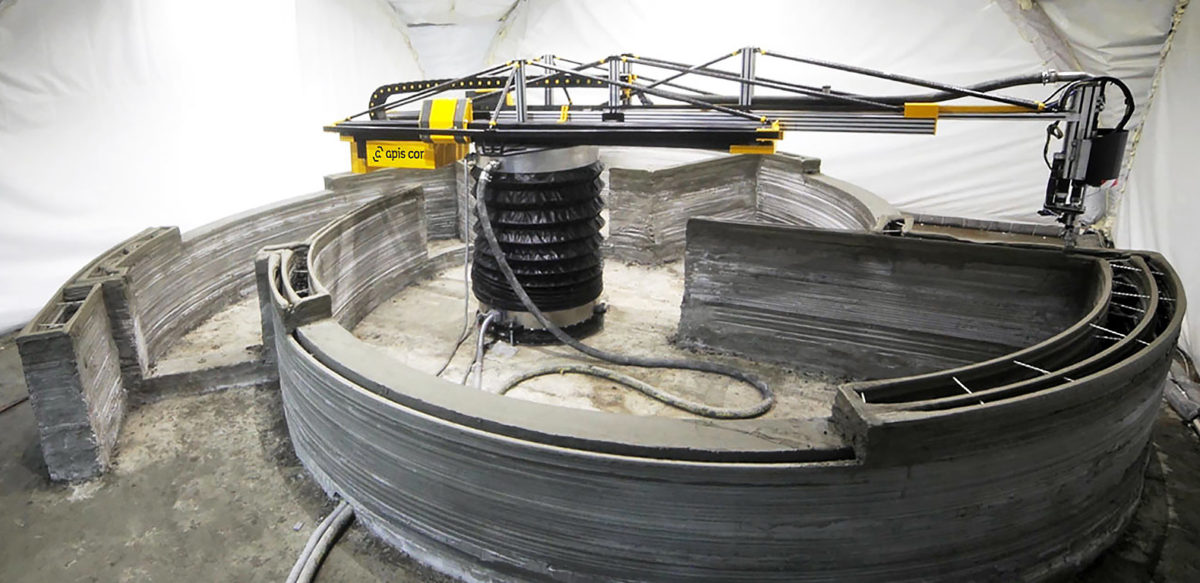3D printing has shaken up many different industries. Ranging from health care to education to the manufacturing industry and so on. You name it, and 3D printing has affected it in one way or the other. It has become hard to imagine these industries without this technology. An industry that is characterized by bricks and mortar for many years also experiences the impact of this technology: the construction industry.
Applications of 3D printing are developing quite rapidly. In fact, the goal of Dubai is to have 25% of buildings being 3D-printed by 2030 (Dutt D’Cunha, 2017). One of the companies that has much potential to play a big role is Cazza, a Silicon Valley-based startup specialized in 3D printing construction. This company has developed a 3D printing robot that looks much like a crane. This immediately indicates the way they distinguish themselves from the competition; the portability. The robot can easily move around and be transported, enabling it to construct the building on-site which saves costs. This in contrast to the manufacturing process of (most) competitors, which is to build separate components in a factory and assemble these on site. With this product, the company has had an investment round of around $25 million (Dutt D’Cunha, 2017).
Even though one of the main ingredients is there, the practical application still experiences some challenges. The development of the required ready-to-use construction materials is still in an early stage (Balch, 2017). Besides that, regulation plays a problematic factor. 3D printing materials have yet to become recognized as an industry standard, which is a difficult task with the current standards being dominant for over decades. Big steps need to be taken in this aspect in order for it to become a widespread technology. Furthermore, quality control is a very important aspect. The materials that are being used in the manufacturing process need to be constantly monitored (Balch, 2017).
When the technology has taken off, this comes with benefits including productivity gains, reduced labour costs and safer working environments (Balch, 2017). Furthermore, it allows the usage of environmentally friendly materials and reduces construction waste (Dutt D’Cunha, 2017). Although the challenges that yet have to be overcome might indicate that it will still take a while for the technology to be used widespread, Cazza believes that within the next five years this technology becomes common in many first world countries. Will we have a printed house in the near future? Time will tell.
References
Dutt D’Cunha, S. (2017). This Startup Is Disrupting The Construction Industry With 3D-Printing Robots. Forbes. Retrieved 16 October 2017, from https://www.forbes.com/sites/suparnadutt/2017/06/14/this-startup-is-ready-with-3d-printing-robots-to-build-your-house-fast-and-cheap/#51c0db36e8e7
Balch, O. (2017). Building by numbers: how 3D printing is shaking up the construction industry. The Guardian. Retrieved 16 October 2017, from https://www.theguardian.com/sustainable-business/2017/jan/31/building-by-numbers-how-3d-printing-is-shaking-up-the-construction-industry


